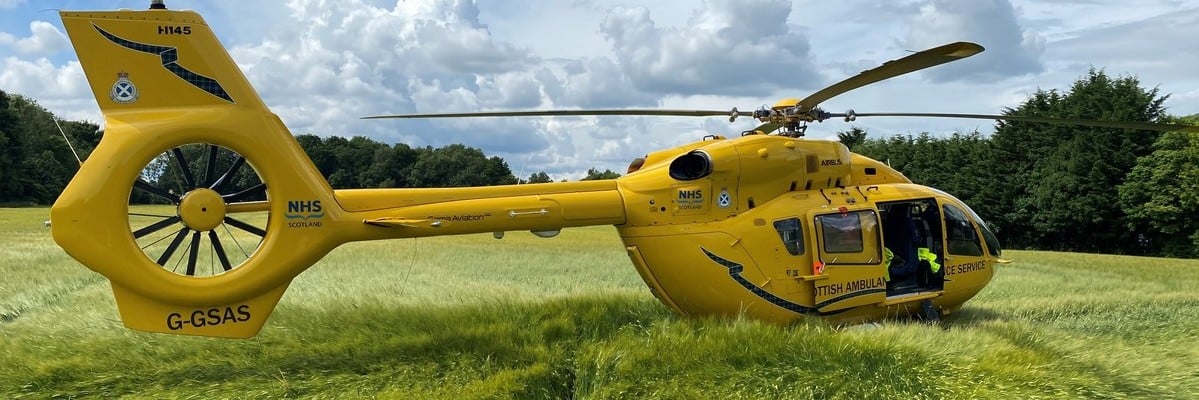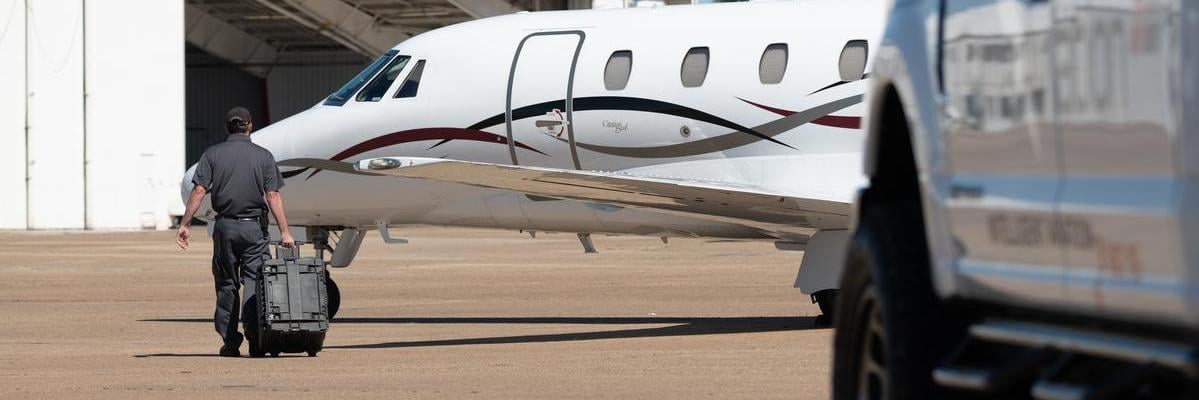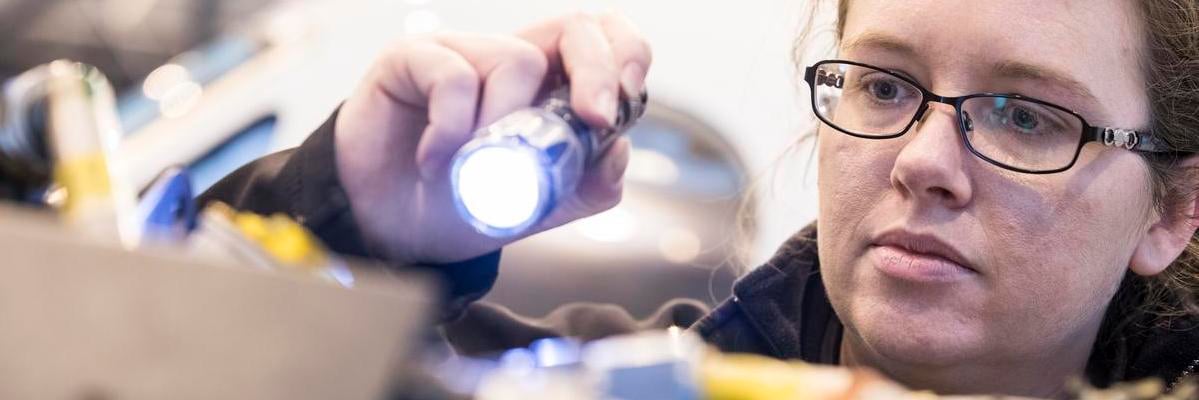Measuring & managing our carbon footprint
Although aviation emits approximately 2% of global Carbon Dioxide (source: ATAG) it is a sector that is increasing pressure to improve its emission footprint. We recognise this responsibility and have been measuring our company’s carbon footprint from 2019 workign alongside Carbon Footprint Ltd, a leading carbon and energy management company, to assess independently its Greenhouse Gas (GHG) emissions in accordance with the UK Government’s ‘Environmental Reporting Guidelines: Including Streamlined Energy and Carbon Reporting Guidance’.
Following ISO14064-1:2018 our streamlined energy and carbon reporting report is as below for 2020.
Wilst we recognise we have made progress we are continuing to look at ways where the business and its clients reduce all emissions in response to the global climate crisis.

The Group’s definition of its carbon footprint for SECR
For the purposes of the SECR report, the Group has defined its carbon footprint as a measure of the impact its activities have on the environment in terms of the amount of greenhouse gases produced, measured in units of carbon dioxide equivalents (CO2e). The Group’s carbon footprint is therefore made up of two parts, direct and indirect emissions.
Direct emissions
Direct emissions are produced by sources which are owned or controlled by the reporting organisation and include electricity use, burning oil or gas for heating, and fuel consumption as a result of business travel or distribution. Direct emissions correspond to elements within scopes 1, 2 and 3 of the World Resources Institute GHG Protocol, as indicated below.
- Electricity, heat or steam generated on-site
- Natural gas, gas oil, LPG or coal use attributable to Company-owned facilities
- Company-owned vehicle travel
- Production of any of the six GHGs (CO2, CH4, N2O, HFCs, PFCs and SF6)
- Consumption of purchased electricity, heat steam and cooling
- Employee business travel (using transport not owned by the Company)

Indirect emissions
Indirect emissions result from a company’s upstream and downstream activities. These are typically from outsourced/contract manufacturing, and products and the services offered by the organisation. Indirect emissions correspond to scope 3 of the World Resources Institute GHG Protocol excluding employee business travel as indicated below.
- Employee commuting
- Transportation of an organisation’s products, materials or waste by another organisation
- Outsourced activities, contract manufacturing and franchises GHG emissions from waste generated by the organisation but managed by another organisation
- GHG emissions from the use and end-of-life phases of the organisation’s products and services
- GHG emissions arising from the production and distribution of energy products, other than electricity, steam and heat, consumed by the organisation
- GHG emissions from the production of purchased raw or primary materials
- GHG emissions arising from the transmission and distribution of purchased electricity
Although not required to meet the SECR legislation, the Group is reporting CO2 emissions for scope one and two as well as reporting additional scope three emissions (the scope two assessment follows the location-based approach for emissions from electricity usage). The Group’s reporting extends to all operations of the business including its wholly owned business interests in the USA, UK, Middle East and Asia.

Treatment of scope three, indirect emissions
Having received advice from Carbon Footprint Ltd, the Group’s ISO14064-1:2018 audit partner, it has further delineated scope
three, indirect emissions, into two broad categories these being:
- Scope three items indirectly associated with the delivery or growth of the Group’s business (travel, home working, etc.). The Group believes these items are directly related to its business activities and therefore should be included within our carbon footprint assessment even if that is beyond the current SECR requirement; and
- Scope three items associated directly with demand instigated by a customer, this being mainly aircraft fuel consumption. The Group recognises and records these CO2 emissions and will, given the limitations of the current engine, fuel and associated technologies, work with its customers to limit and mitigate these emissions through its best endeavours
2020 verified Greenhouse Gas emissions
The Group is keenly aware that 2020 was a unique pandemic year and consequently the GHG emissions table reflects a year of far lower business activity. In accordance with the ISO 14064-1:2018 methodology the calculation accuracy and materiality of the following report has a total uncertainty of +/- 6% leading to an estimated total error margin (all scopes) of +/- 1,474 tCO2e.
| Scope | Activity | Tonnes CO2e |
|---|---|---|
| Scope One | Site gas oil | 406 |
| Site gas | 154 | |
| Van travel and distribution | 32 | |
| Company car travel | 8 | |
| Scope one sub-total | 600 | |
| Scope Two | Electricity generation | 2,086 |
| Scope two sub-total | 2,086 | |
| Scope three | Customer aircraft fuel consumption | 21,845 |
| Flights | 210 | |
| Home-workers | 144 | |
| Electricity transmission & distribution | 114 | |
| Other* | 55 | |
| Scope three sub-total | 22,369 | |
| Total | 25,055 |
| Total scope 1,2,3 including customer aircraft fuel consumption | Tonnes CO2e | |
|---|---|---|
| Total tonnes of CO2e | 25,055 | |
| Total Energy Consumption (kWh)** | 97,009,229 | |
| Tonnes of CO2e per tonne of jet fuel | 6.90 | |
| Tonnes of CO2e per £M turnover*** | 162 | |
| Scope 1,2 & 3 excluding customer aircraft fuel consumption | Tonnes CO2e | |
| Total tonnes of CO2e excl. customer aircraft fuel consumption | 3,210 | |
| Tonnes of CO2e per employee | 4.41 |
**Total Energy Consumption includes Electricity, Site Gas, Site Gas Oil, Company Owned Vehicles, Grey-Fleet and Customer Aircraft Fuel Consumption.
***25,054.58/ (Revenue of $197.5m/1.28 = £154.3m) =162
Offsetting carbon emissions
The Board has approved the offsetting in 2021 of the Group’s 2020 emissions pertaining to the following categories audited by Carbon Footprint under ISO 14064-1:2018:
- The Group’s scope one emissions;
- The Group’s scope two emissions; and
- The Group’s scope three emissions but limited to those for which the business is directly responsible. This omits indirect customer aircraft fuel consumption as previously defined
To this end the Group is committed to offsetting at least 3,210 tonnes of CO2e during 2021. The table below shows the breakdown of the scope 1, 2 & 3 emissions excluding customer aircraft fuel consumption and the effect of the offsetting. Breakdown of CO2e per emissions scope and effect of offsetting
| Activity | 2019 (baseline) | 2020 (current year) |
|---|---|---|
| Total Scope 1 & 2 Gross Location-Based Emissions (tCO2e) | 3,736 | 2,686 |
| Scope 3 emissions (tCO2e) ex. customer aircraft fuel | 1,193 | 524 |
| Sub-total | 4,929 | 3,210 |
| Carbon offsets (tCO2e) purchased | – | 3,210 |
| Total Net Location-Based Scope 1,2 & 3 Emissions (tCO2e)(excl.customer aircraft fuel) | 4,929 | n/a |
| Scope 1,2 & 3 excluding customer aircraft fuel consumption | Tonnes CO2e | |
| Total tonnes of CO2e excl. customer aircraft fuel consumption | 3,210 | |
| Tonnes of CO2e per employee | 4.41 |
Supported offset projects and certification
Our 2020 offset to cover our global carbon footprint for scope 1,2 and 3 as described above will include tree planting & habitat protection in Scotland and Brazil. This scheme was voted for by 116 members of staff from a total response of 228. In all, over 900 global members of staff where invited to participate.
The Group’s carbon offset certificate for 2020 is available here.
